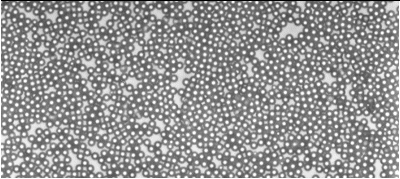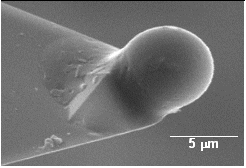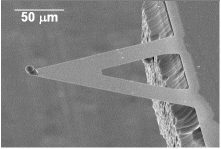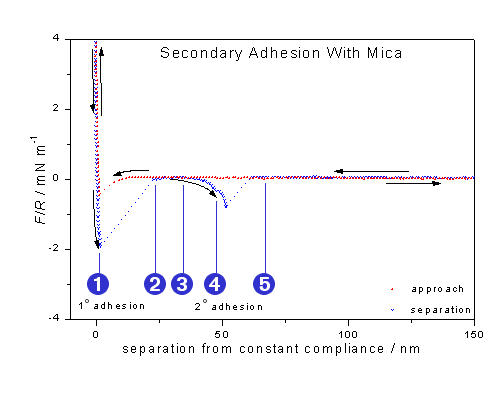The Interactions of Amphiphilic Latexes with Surfaces:
The Effect of Surface Modifications and Ionic Strength
Stuart W. Prescott, Christopher M. Fellows, Robert F. Considine, Calum J. Drummond and Robert G. Gilbert
Key Centre for Polymer Colloids, School of Chemistry, Sydney University NSW 2006, Australia
CSIRO Molecular Science, Private Bag 10, Clayton South VIC 3169, Australia
Abstract
The effect of surface modifications brought about by a polymeric stabilizer on the interactions between polymer colloid particles and various substrates in aqueous media are directly measured using atomic force microscopy. The interactions of polystyrene particles with grafted hydrophilic hairs of hydroxypropyl cellulose (denoted HPC/PS), of molecular weight ~ 105, with mica, silica and graphite substrates are measured. HPC/PS is found to be compatibilized so that it will interact with both hydrophobic and hydrophilic substrates. The observed jump-to contact between HPC/PS and silica is characteristic of polymer solutions and is the result of the grafted hairy layer. Further direct evidence of HPCsubstrate interaction is seen in a secondary adhesion with mica. The adhesion of the particles was found to follow the order silica > graphite > mica. The magnitudes of these interactions are rationalized in terms of the interactions of each of the substrate, core polymer and surface modification. It is concluded that the combined effects of surface roughness and hairy layer collapse due to compression give rise to the observed trend.
Key Results
Synthesis of Particles
Polystyrene particles were synthesised using dispersion polymerisation. The particles synthesised had an average diameter of 6.4 µm. Due to the synthesis technique, the particles have an hydroxypropyl cellulose (HPC) coating on their surface. The coating density is around 1 chain in 7 nm2.
 An optical micrograph of the particles used in this study. |
Colloid Probe AFM
The particles were then attached to an AFM cantilever using an epoxy resin. The colloid probes produced in this fashion were then used for interaction-force studies.
  SEM micrographs of used colloid probes. |
Interaction Forces
The interactions between the particles and various substrates (mica, silica and graphite) was measured using an atomic force microscope. Direct evidence of the interaction between the HPC chains and the surfaces was observed in this system as a secondary adhesion. The interaction curve and a cartoon explaining the result are shown below:
  The secondary adhesion of the HPC/PS particles with a mica substrate. |
The overall results indicated that with a highly deformable surface coating, the actual interaction strength may be increased by substrate roughness [1]. This is the opposite of what is normally observed with har particles. A pictorial representation of the reasons for this along with a summary of the interactions with the substrates used is shown below.
 The influence of roughness on effective contact surface area for systems with and without a deformable surface coating. |
 The interactions between the particles and the substrates for the three substrates studied here. |